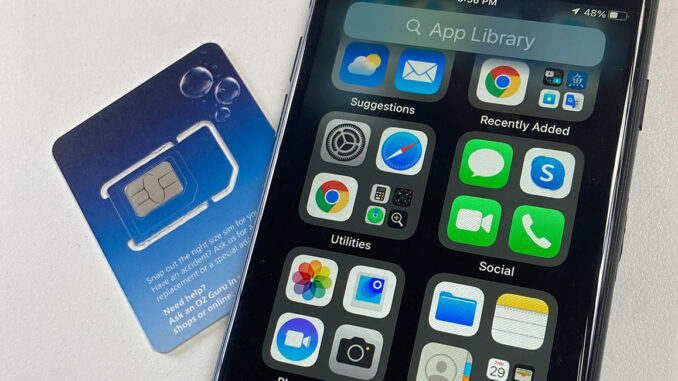
NEW YORK — SIM-swapping is a growing form of identity theft that goes beyond hacking into an email or social media account. In this case, the thieves take over your phone number. Any calls or texts go to them, not to you.
Experts say these scams will only increase and become more sophisticated, while the data show they are rising. The FBI Internet Crime Complaint Center reports that SIM-swapping complaints have increased more than 400% from 2018 to 2021, with associated personal losses estimated to be more than $68 million.
Rachel Tobac, CEO of online security company SocialProof Security, says the numbers are a vast underestimate because most identity thefts are not reported.
How does the scheme work?
Criminals use personal information about their victims — phone numbers, addresses, birthdays and Social Security numbers — obtained through data breaches, leaks, dark web purchases or phishing scams to impersonate the victims as they contact their mobile carriers.
They will claim the original phone and SIM card were damaged, lost or sold accidentally and ask for the number to be associated with a new SIM, or eSIM, card in their possession. Once this is done, the phone number and the ability to receive text messages or calls to verify accounts belong to the criminals.
Prevention is the best form of protection, according to cybersecurity experts. The tricks and habits security experts say help prevent SIM-swapping, which they have long been recommending for online security in general. They include the following:
Better password habits
If your credentials are caught in a cyber breach, the hackers could try using the stolen passwords to access other services and gather the personal data they need to pull off a SIM swap.
Change it if you’ve been using the same or similar login information for multiple websites or online accounts. If criminals steal your password from one service, they can try it on your other accounts and quickly get into all of them. Consider a password manager if you need help to memorize your various credentials.
Also, use strong passwords that include letters, numbers and symbols. The longer they are, the better.
Multifactor authentication without texts
Add biometrics or multifactor authentication apps and devices that do not involve texting. These methods often use separate login methods and encryption not tied to your phone’s identity, making them more difficult for criminals to access.
AT&T also advises contacting your carrier to set up a unique passcode to prevent significant account changes, such as porting phone numbers to another carrier. Your carrier may already have other protections against SIM swapping, so it’s worth calling them to ask.
Watch out for phishing schemes (especially at work)
Criminals will use email or text messages to try to trick you into giving them your personal and financial information or to expose your workplace to possible attacks, and it’s incredibly effective.
In its annual State of the Phish report, the cybersecurity firm Proofpoint found that the majority of data breaches worldwide still involve human lapses.
If you suspect you have received a possible phishing message or email, report it. Most of the popular email platforms have buttons or functions specifically for reporting phishing attempts. If you’re at work, follow the advice from your company’s information security team.
Steps to take if you’re a victim
All major U.S. carriers have web pages advising victims how to report SIM fraud.
However, an Associated Press reporter who recently was hit by such an attack advises that victims should be diligent in working with the carrier to fix the issue. Filing complaints with the Federal Trade Commission, the Internet Crime Complaint Center, or their state attorneys general can expedite recovery efforts.
If card payment numbers were stolen, inform your bank or credit card company, explaining that your card is at risk of fraud and asking the company to alert you to suspicious activity.
You can also notify credit agencies, including the three leading firms: Equifax, Experian and TransUnion. They can freeze your credit, restrict access to your credit report, and make it hard to open new accounts or issue a fraud alert. They will also add a warning to your credit report, encouraging lenders to contact you before lending money.
